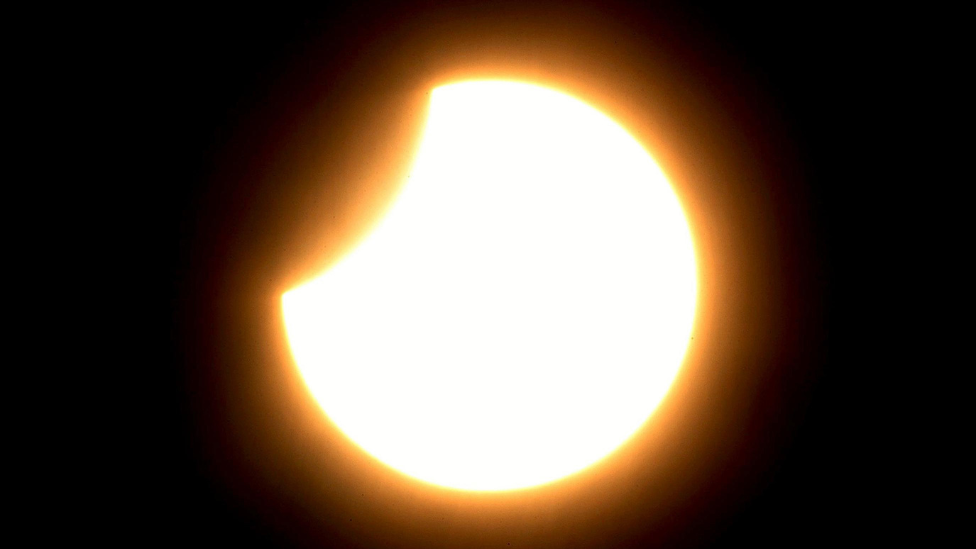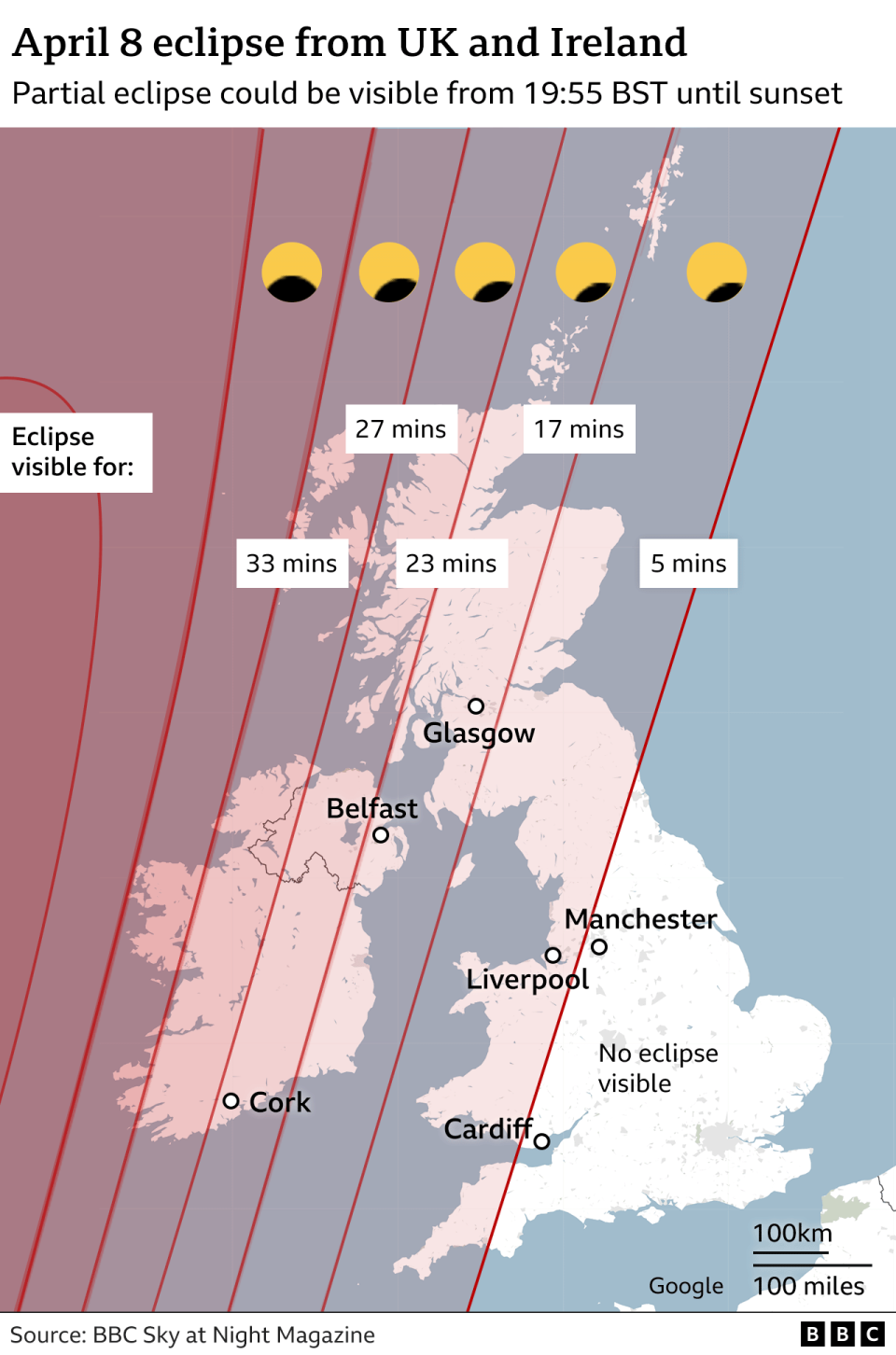Will I be able to see the solar eclipse in Scotland?

Parts of Scotland could catch a glimpse of the solar eclipse set to darken the skies over North America on Monday.
The obscuring of the sun by the moon will stretch from Mexico to the eastern tip of Canada.
The UK will experience a less spectacular version of the cosmic phenomenon, but a "partial" eclipse may be visible.
However, even that is dependent on Scotland's inclement weather conditions.
What is an eclipse?
A solar eclipse occurs when the Moon moves between the Earth and the Sun, blocking some or all of the Sun's rays from reaching the Earth.
It can create two types of shadows - known as "total" or "partial" eclipses.
Partial eclipses occur when part of the sun is covered by the moon, but total eclipses leave just a sliver of light coming from our star's outer atmosphere
They occur every 18 months or so, but astronomers predict the next one won't occur until 2045.
Will I see the eclipse from Scotland?
Western parts of the country will be able to see varying degrees of the eclipse, assuming it is a clear night.
The best viewing will be on the Isle of Lewis, where locals will be able to see about 22% of the Sun being obscured by the Moon.
It is possible that those in the Northern Isles, including Shetland, and on the north-west coasts will also see the eclipse - but a much smaller "bite" will be taken out of the Sun.
There, it will be visible for about 33 minutes just before sunset shortly after 19:55.
Prof Catherine Heymans, astronomer royal for Scotland, said it would be an "eerie experience" for those across the Atlantic.

But it will be a little less dramatic in Scotland.
"We don't have that perfect alignment between the Earth, the Moon and the Sun, we're only going to see what is called a 'partial eclipse,' where the moon just skirts round the bottom of the sun," she told the BBC's Good Morning Scotland programme.
"The weather is not on our side today. The only chance for people to see this is going to be up on the Isle of Lewis, which is actually the best place to see it.
"Clouds willing, about 22% of the sun will be obscured just before sunset tonight.
"It will be low down on the horizon. With clouds, we are just seeing the tail end of it.
"It is not going to be easy to watch it."
On the east coast, it is possible it could be seen for about five minutes.
But, again, that is all dependent on the weather.
What will the weather be like?
Cloudy conditions are likely to make it difficult viewing for much of the country, but those in the west and north west of the country will likely have the better opportunities.
The Met Office is predicting wet and overcast conditions for most of Scotland's major cities, meaning it is unlikely the eclipse will be seen.
Welcome to the new week. A quiet start and a pleasant day before rain sweeps in this evening and tonight for most. JR pic.twitter.com/X3hTSOnWcH
— BBC Scotland Weather (@BBCScotWeather) April 8, 2024
BBC Scotland weather presenter Derek Macintosh said anyone hoping to catch a glimpse of the phenomena should position themselves on higher ground for the best chance.
He said: "There is the potential for some sightings of the partial solar eclipse this evening over the Western Isles, Skye and far north-west coasts.
"Although even if the cloud is broken overhead, the Sun could be behind clouds over the horizon, particularly in the Western Isles.
"You'll need a clear view of the horizon, so it might be a good idea to position yourself on slightly higher ground to get a clearer view towards the horizon."
How can I watch it safely?
It is important not to stare directly at the eclipse when it occurs.
Doing so can cause damage to the retinas and protection must be worn.
Experts recommend using special glasses, which have a UV-blocking filter.
These glasses are different from sunglasses, as they block all light entirely except that coming from the Sun.
If you can't get glasses, try piercing a hole using a pin into one piece of paper. With your back to the Sun, hold that paper above your shoulder so the sun's rays can shine through that small little hole.
At the same time, hold up the another piece of paper in front of you.
It will act like a screen, onto which the Sun's rays will be projected.

